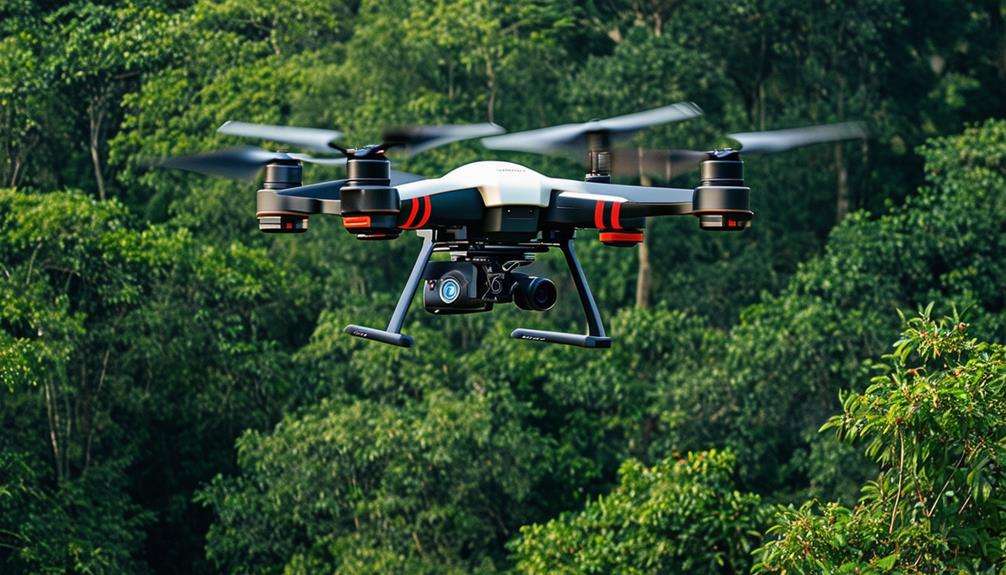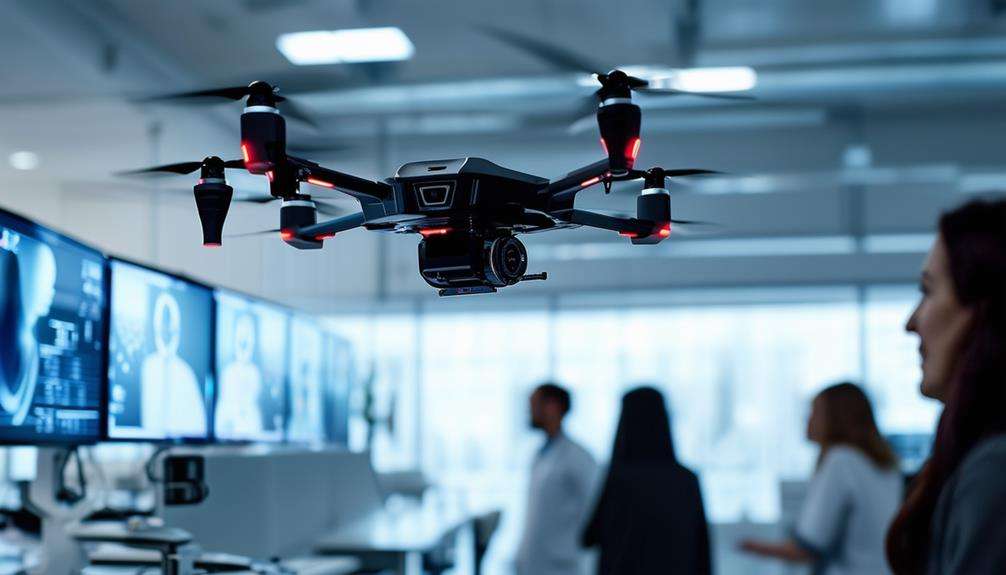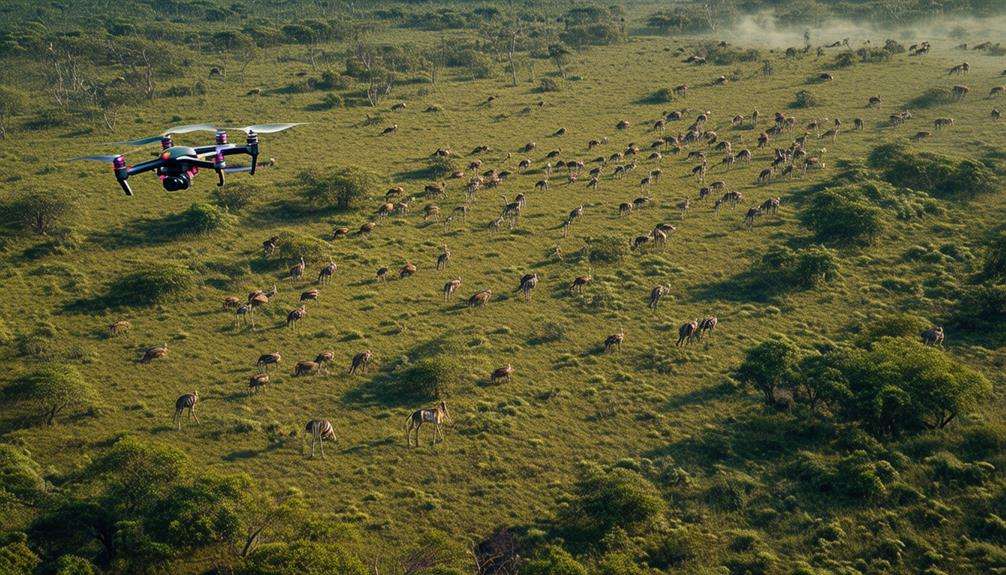Drones and Public Safety: Enhancing Emergency Response
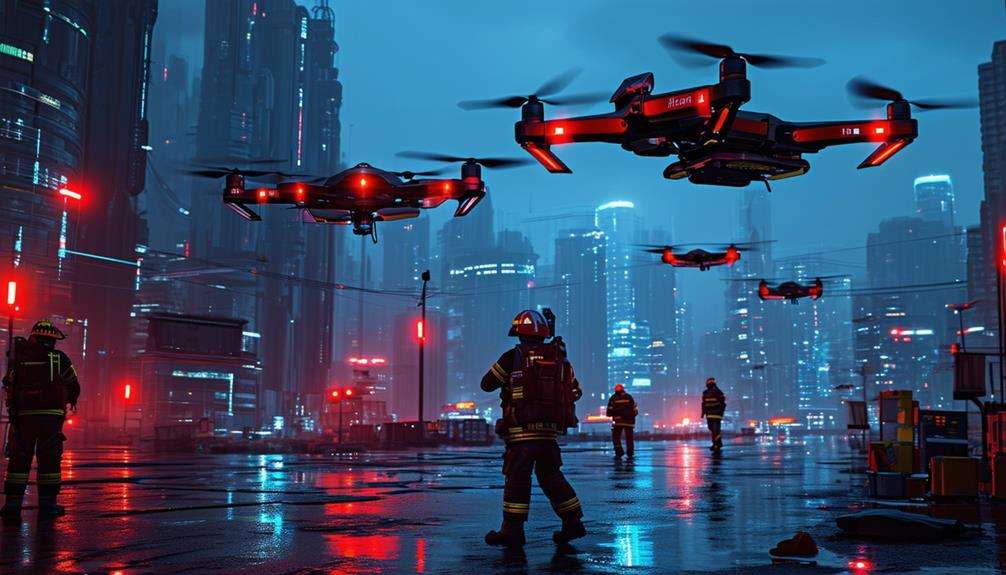
Imagine a scenario where drones significantly enhance emergency response efforts by providing real-time aerial views, optimizing resource allocation, and improving first responder safety. How do these flying devices achieve such feats?
In search and rescue missions, firefighting, and disaster monitoring, drones utilize advanced technology like high-resolution cameras and thermal imaging to swiftly deliver critical data. However, challenges and regulations are involved in deploying drones for public safety. Understanding their role in transforming emergency response operations requires a deeper look at these aspects.
Key Benefits
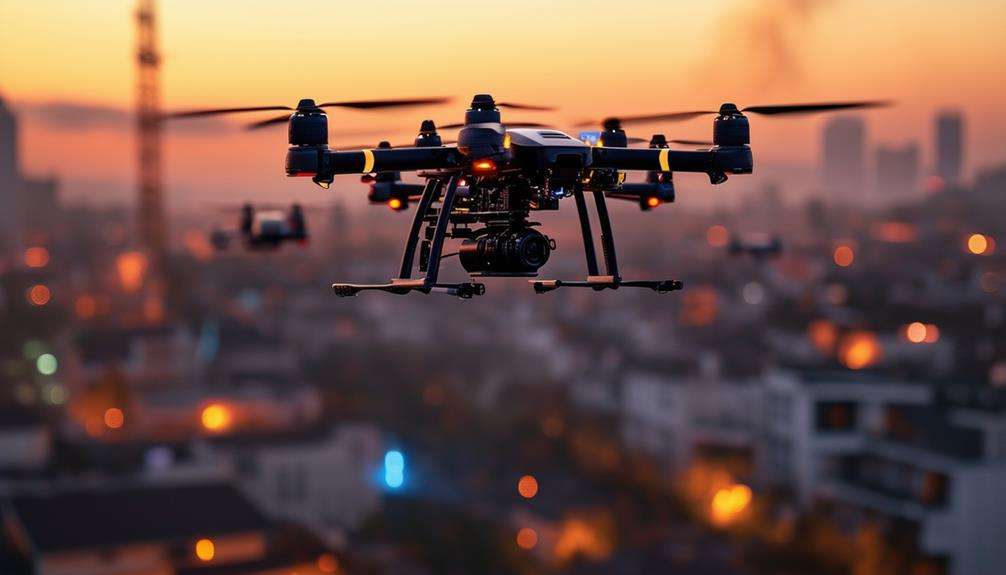
In modern emergency response scenarios, drones provide crucial real-time information that enables swift and effective decision-making. When an emergency occurs, every second is critical. Drones can swiftly reach affected areas and offer a comprehensive aerial view. This immediate situational awareness allows responders to quickly grasp the scope and nature of the incident.
Drones also enhance resource optimization. By capturing data and delivering actionable intelligence, they help allocate manpower, equipment, and other resources precisely where they're needed. This ensures that response efforts aren't only quick but also efficient.
Enhanced safety is another significant benefit. Instead of sending responders into potentially hazardous conditions without prior knowledge, drones can first survey the area. This minimizes risks for the team and ensures public protection is maximized.
Real-World Applications
Drones have revolutionized public safety by providing invaluable support in various critical scenarios, including search and rescue missions, firefighting, and monitoring natural disasters. Their real-world applications extend far beyond emergency response, making them essential tools for first responders by offering rapid deployment capabilities and enhancing situational awareness.
| Application | Benefit |
|---|---|
| Search and Rescue | Quick location of victims |
| Firefighting | Real-time fire mapping |
| Natural Disaster Monitoring | Early warning and assessment |
| Law Enforcement | Aerial surveillance and support |
Emergency responder drones are indispensable in hazmat incident assessments, providing critical information that aids in the safe management of hazardous materials. During large events, drones assist with crowd control, ensuring public safety by monitoring situations from above. In law enforcement, drones are utilized in SWAT operations, crime scene investigations, and forensic analysis, thereby enhancing rapid response and situational awareness.
Emergency management teams rely on drone technology to monitor inaccessible areas, offering a clear view of the terrain. This improved visibility accelerates decision-making processes, ultimately enhancing overall emergency response efforts. By integrating drones into various aspects of public safety, significant improvements are achieved in the management and resolution of emergencies.
Drone Technology
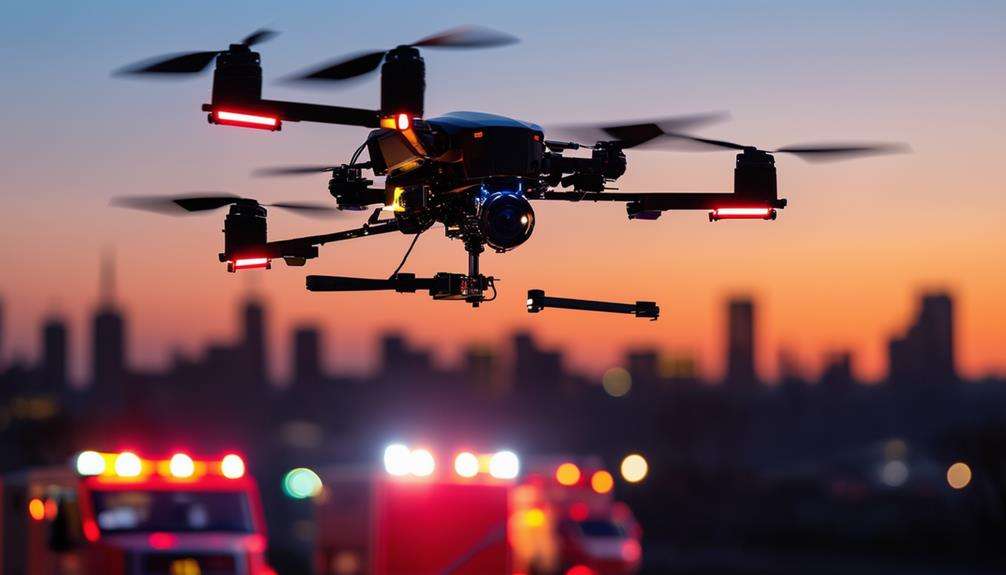
Drone technology, with its advanced features like AI tracking, live streaming, and autonomous flight, is revolutionizing public safety efforts. These innovations not only enhance emergency response but also transform how first responders operate in the field.
Equipped with high-resolution cameras and thermal imaging capabilities, drones offer unparalleled situational awareness. They can rapidly survey disaster zones, locate missing persons, and assess hazardous situations without endangering human lives. Obstacle avoidance technology ensures that drones can safely navigate complex environments, making them invaluable in urban settings or dense forests.
Key features that make drones indispensable for public safety include:
- High-resolution cameras: Capture detailed images and videos to aid in decision-making.
- Thermal imaging capabilities: Detect heat signatures for locating individuals in low-visibility conditions.
- Obstacle avoidance technology: Prevent collisions in challenging terrains.
- VTOL drones: Offer extended flight times and ranges for comprehensive area coverage.
VTOL drones, such as the JOUAV CW Series, provide up to 480 minutes of flight time and a 200 km range, making them ideal for extensive coverage in emergency scenarios. Specialized applications for these drones include search and rescue operations, disaster response, law enforcement support, and firefighting missions. The adoption of drone technology in public safety is growing, bolstered by its proven effectiveness in enhancing emergency response capabilities.
Automation in Operations
Leveraging the advanced capabilities of drone technology, automation in operations ensures faster, more accurate, and less human-dependent emergency responses. Automated drone systems streamline fleet management and incident response processes, facilitating efficient deployment by public safety agencies. Key features such as autonomous flight and obstacle avoidance enable drones to safely and effectively navigate complex environments during emergencies.
Automation empowers drones to deliver real-time data and intelligence, which are critical for making informed decisions swiftly in urgent situations. This enhances the overall effectiveness of emergency response efforts. Reduced need for continuous manual intervention allows your team to focus on other essential tasks, thereby boosting operational efficiency.
Scalability is a significant advantage of automation. As operational demands grow, automated drone systems can easily expand without necessitating additional manpower. This scalability enables coverage of larger areas and simultaneous response to multiple incidents.
In essence, automation in drone operations not only accelerates and refines emergency responses but also enhances public safety by employing advanced technology to manage complex and dynamic scenarios.
Regulatory Considerations
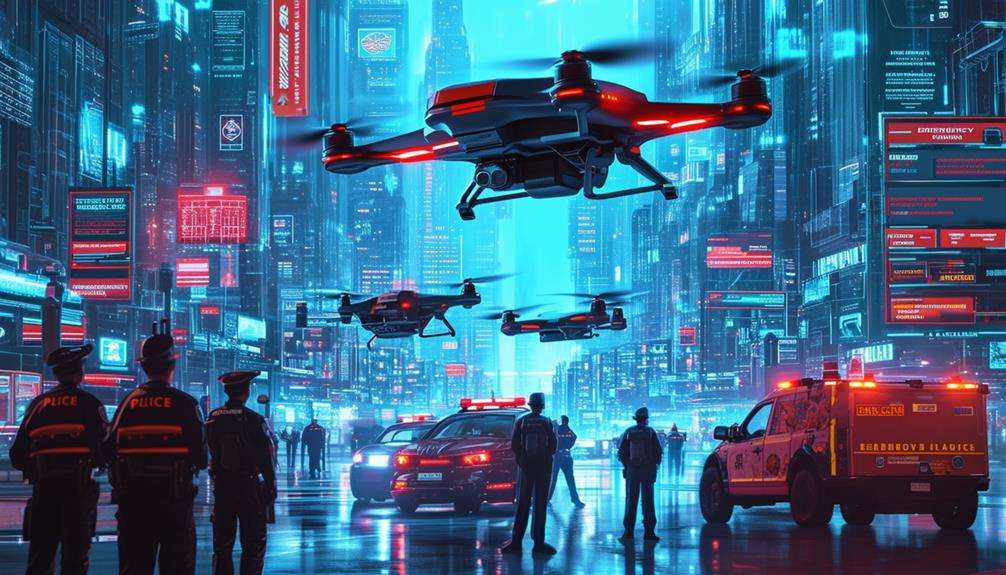
Understanding the regulatory landscape is essential to ensure that drone operations for public safety are both lawful and effective. Compliance with FAA regulations is crucial for safe and legal operations. This includes understanding airspace restrictions and obtaining the necessary permits for emergency response missions. Adherence to local, state, and federal laws is also vital for lawful drone deployment.
Compliance extends beyond airspace and permits. Privacy laws and data protection regulations must also be considered. When using drones for emergency response missions, handling collected data responsibly is imperative to respect individual privacy and avoid legal complications.
Key points to keep in mind:
- FAA regulations: Ensure compliance with the Federal Aviation Administration's guidelines.
- Permits: Obtain necessary permits for specific emergency response missions.
- Local, state, and federal laws: Stay informed about and compliant with relevant laws.
- Privacy and data protection: Adhere to privacy laws and data protection standards to safeguard collected data.
Future Outlook
How will drones revolutionize public safety in the coming years? With a projected market size of $2 billion by 2028, the future outlook for drone technology in public safety is exceptionally promising. Drones will act as a force multiplier for first responders, drastically improving response times and contributing to lower crime rates.
Drone Technology Impact
| Area | Description |
|---|---|
| Market Size | Expected to reach $2 billion by 2028, indicating rapid growth. |
| Response Times | Drones enable quicker assessments and faster emergency response. |
| Crime Rates | Enhanced surveillance and rapid deployment help deter criminal activities. |
Adopting advanced drone technology can significantly strengthen community safety and resilience. Drones can rapidly assess disaster-struck areas, deliver crucial supplies, and provide real-time data, making emergency response more efficient. This technology also supports law enforcement by offering aerial surveillance, aiding in crime prevention and evidence gathering.
The growth of the U.S. drone industry is vital for mitigating supply chain vulnerabilities, ensuring that first responders have access to the best tools available. As drones become more integrated into public safety protocols, the future outlook is one of increased security and community well-being. Embracing this technology will not only improve public safety but also create more resilient and responsive emergency systems.
Conclusion
By leveraging drones, emergency response is being revolutionized. These advanced tools provide rapid, real-time data, enabling quicker and more informed decision-making. Drones enhance operational efficiency and safety in various scenarios, including search and rescue missions, firefighting, and disaster monitoring. Embracing this technology does more than keep pace with advancements; it actively improves public safety. As regulations evolve, expect ongoing innovations that will continue to transform emergency response strategies.


